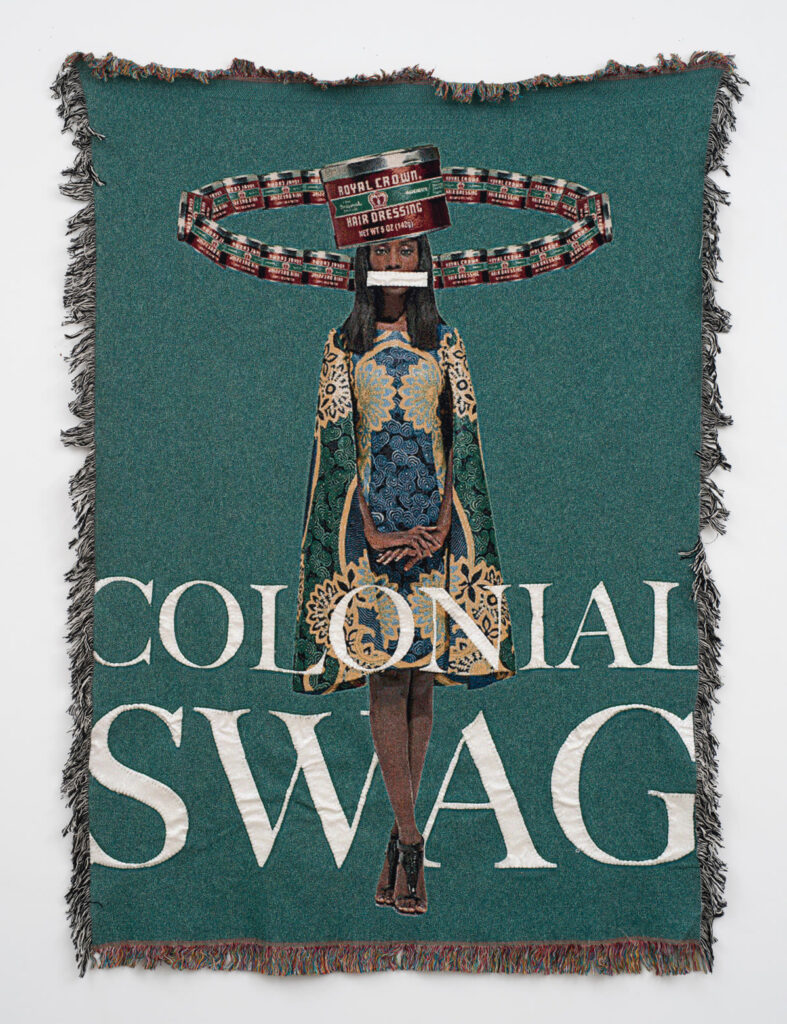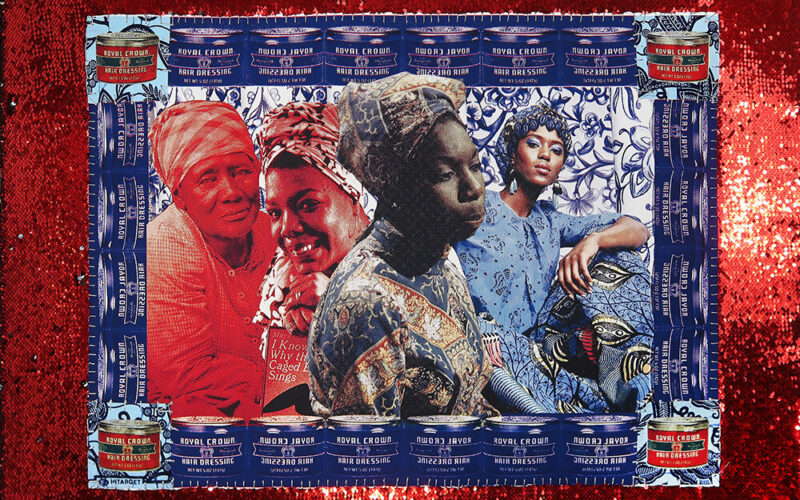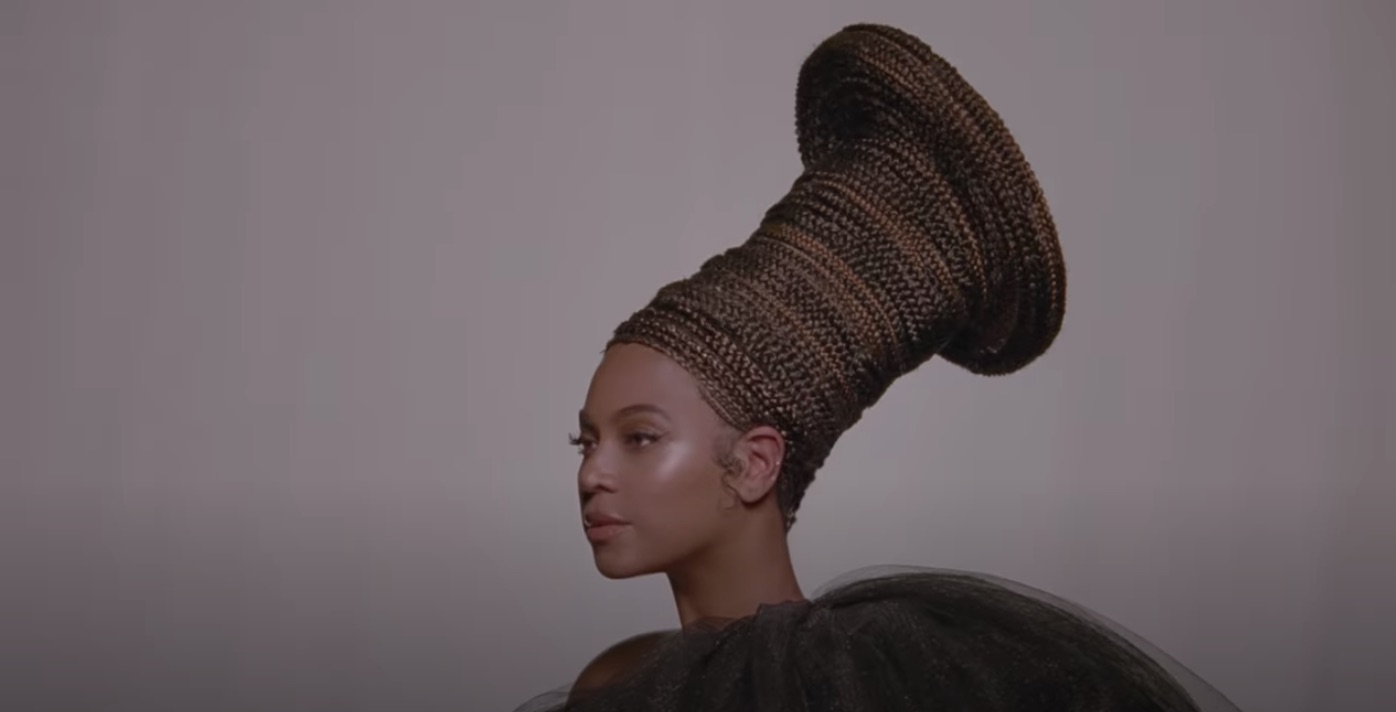Above: Earth History (Wrap Gradient), 2019
Multimedia artist April Bey has created a framework of access for her community through her Equity in Collecting program and encourages other artists to do the same.
The self-proclaimed alien from “Atlantica” was once dragged by the Beyhive for teaching a class on Beyonce’s relationship to feminism. But now, her otherworldly textiles are showing in the Tina Lawson- and Genel Ambrose-curated show, WITNESS. And April already has sold out the waitlist for her second Equity in Collecting drop.
Bey is figuring out what she claims is a “process and rule based practice” for collectors working with a constrained budget to acquire works. As a result, Bey has managed to complicate the narrative that Black artists should just “give their work away for free” rather than create new systems that counter white supremacy in art markets.
April Bey’s mixed media figurative portraitures of Black life are radiant, effervescent and funky. Her large, woven blankets depict big, beautiful Black femmes in bright colors adorned with glamourous nails. There’s a sense of reciprocity in the way that her “deities” stare out from the work, honoring Black viewers. It’s important to know that an artist is actively loved by the community they make work for. It’s Bey’s love of Black femmes that has given her the platform to move forward with her newest endeavor, The Equity in Collecting Program. Her longtime supporters are her greatest inspiration for this work.
The Equity in Collecting Program gets galleries and museums to subsidize the cost of original artwork, making her pieces more affordable. It’s a move that takes a certain kind of agency, finesse and gumption. Traits that Bey quickly learned to cultivate as a young migrant artist from the Bahamas navigating the intense racism of American university systems and the art world.
Born to a Black father and white mother in the Bahamas, Bey was surrounded by audaciously painted homes, melanin-rich skin tones and the Atlantic Ocean. At a young age, Bey became aware of how colonialism affected her world via the tourism industry. Her family owned a booze cruise where Bey got to see the stark differences between tourists and natives of the Bahamas.
It was there that the concept of Atlantica, a speculative Afrofuturist universe that is continually expanding, was born. She carried the conceptual seeds of Atlantica with her to art school in Indiana at Ball State University, where she completed a Bachelor of Fine Arts, followed by a Master of Fine Arts from California State University, Northridge. Throughout her studies, she battled the racism that comes with access to such institutions. She found relief from that in her travels abroad during the summer. Every summer, she’d head to places like Italy and Spain, where she used her student visa to get into museums for free and scour permanent collections.
Possibly envisioning her own future, she’s currently in the permanent collection of The California African American Museum, The National Art Gallery of The Bahamas and The Current, Baha Mar in Nassau, Bahamas. Today, Bey is a tenured professor of art at Glendale Community College, where her keen understanding of migration and colonialism feeds into her equity work. She also served as its DEI (Diversity, Equity, and Inclusion) committee chair and then on its academic senate.
Using the resources of an oppressive institution to provide for those who have been abused by those systems seems to be a core value of Bey’s. It’s as apparent in the policy she’s written at her university as it is in the Atlantica universe she often grounds her exhibits in.

Colonial Day Sale II (Blue/Green), 2020
And now, the artist is experimenting with another form. Inspired by the Housing Choice Voucher Program or Section 8 as it’s more popularly known, which provides rent vouchers for qualifying recipients, Bey has made a new way for lower-income communities to procure visual art. “[The art] is still priced at what it should be within my body of work, but between the recycled materials, me and the gallery, we can subsidize a 90% discount if you meet the criteria of being from a marginalized background.”
At the moment, April’s work ranges from $5,000 to $75,000. If potential collectors were selected for the program, they could have the opportunity to purchase work at a 90% discount. That discounted rate meets the needs of many emerging collectors who, by owning original work from April Bey, will gain a return on their investment in the future. That’s how you build intergenerational wealth.
While investing in art is still a gamble that many low-income communities can’t afford, recent sales of Black contemporary artists for millions offer some hope. But April isn’t betting on the future sale price of her work as much as she just wants to be able to get her work into the hands of those who have supported her throughout her career.










